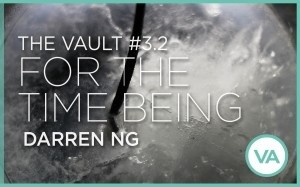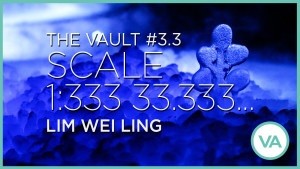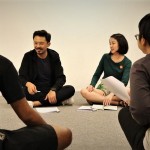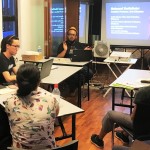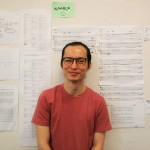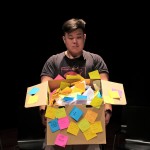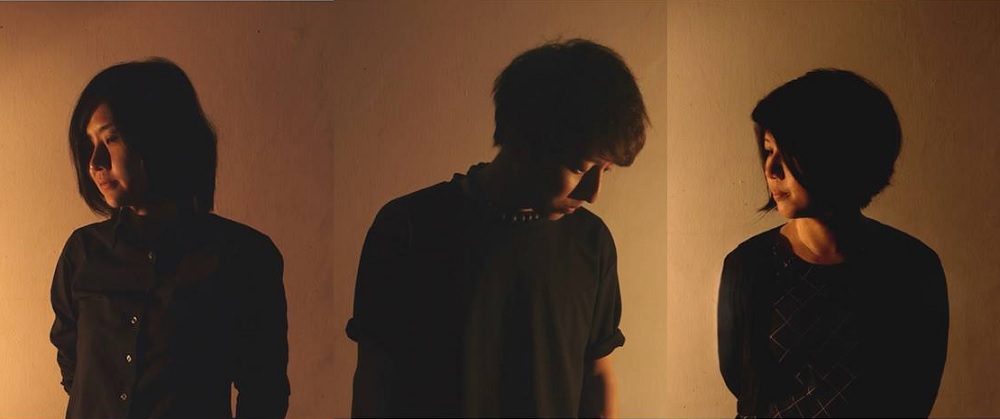
Theatre design collective INDEX comprises spatial designer Lim Wei Ling, sound artist/composer Darren Ng, and lighting designer Lim Woan Wen.
INDEX was formed as a design collective winged under local theatre company The Finger Players in 2013. That was when spatial designer Lim Wei Ling, sound artist/composer Darren Ng, and lighting designer Lim Woan Wen first worked together for IN:dex, a performance installation presented as part of the Esplanade’s The Studio’s RAW series.
In 2015, INDEX created a three-part series as part of Centre 42’s Vault programme, where the three artists individually responded to Quah Sy Ren’s play, Invisibility, without directors or performances. Instead, they explord the play’s themes through space, sound, and light. And now, they’re back with a new project titled The Little Room that Grew Buoyant, Little by Little. The team is currently still in the early stages of conceptualising the experiential installation, but here’s a little bit about what we can expect, and how the three of them are planning to work together.
What do you hope to explore with The Room that Grew Buoyant, Little by Little?
Lim Wei Ling: We are contemplating the idea of a room as a medium in framing the richness of our world, its narratives and experiences; a room as a place that defines or situates a reality that is already there. Our world is already so wonderfully rich with life, unpredictability and multiplicity. Rather than devoting meaning, intellect and form to these, we look to return creatorship to the everyday phenomena that surround us by working as agents to surface, situate, frame and allowing them to create themselves.
How do you plan on exploring that?
Lim Woan Wen: It is not confirmed yet, but we are looking at putting together a site-specific installation that would be opened up as a free space, where the visitor is invited to spend time with/in.
How did the title of the piece come about?
Darren Ng: I was reading The Poetics of Space by Gaston Bachelard, and came upon a quote by Jean Laroche in which René Char dreams in “a room that grew buoyant and, little by little, expanded into the vast stretches of travel”. I was very taken by this string of words – how vastly visual, yet at the same time still and quiet, but organic. I felt at once enclosed and released. This sentence grew on me over time. When this project came about, I proposed the title to the others, and it sat well with all three of us.
Tell us about your process in putting together The Room that Grew Buoyant, Little by Little.
DN: The three of us share the same belief that the work itself will inform us of the intent and content as it develops. In this project, we are learning to let things be and allow the piece to form naturally. So, we try not to constantly steer the project with an end result in mind. We are hoping that by not injecting too much intent as we progress, the piece will act as a pith for open ideas as visitors experience it, allowing them to form meanings and narratives of their own.
This may not be an easy way to work, as it requires us to trust the process and one other a bit more than usual. To facilitate the process, we continue to share thoughts and readings, tidbits of life and encounters from different points of our lives. We muse together and stay honest with one another. Based on what we are looking to explore, we also share our perceptions and our learning with each other, and we respond to them individually while keeping an open mind at all times and staying on the same page.
Do the three of you have very different working styles/approaches, or are you quite similar?
LWW: The phrase “same same, but different” sums it up – we are three individuals with different personalities, traits, habits, wants and needs. The fact that our medium of expression is different means that our work flow and approaches differ out of necessity in some aspects. But as a collective, we share very similar sensibilities, aesthetics and work methods.
We have been working together for years in theatre before we started INDEX. In our kick-start project IN:dex (supported and presented under the Esplanade’s The Studio’s RAW series) back in 2013, we made an improvised performance installation where we did not reveal our final vocabulary to one another until the actual show. As it turned out, all three elements still “matched” rather substantially and there were audience members who believed it was all pre-rehearsed. In some ways, we thought the experiment had “failed”, but at the same time it said a lot about the shared intrinsic qualities in our individual work.
How do you think INDEX has grown in the last five years?
LWL: I would like to think that INDEX was created to give ourselves a platform of autonomy and a channel to have honest conversations with one other, the audience and our own selves through our works.
LWW: Yes I agree. So, in a way, INDEX is a reflection of our combined values and fluctuating states of mind and it has grown as far as we ourselves have, individually as well as collectively.
What do you enjoy most in working with your particular language of expression – space, lights, and sound?
LWL: The spatial discipline has the privilege (and also danger) of framing the world with ideals and perspectives. I enjoy how it can redefine or amplify the everyday narrative in life, giving new possibilites to the way we operate in the world.
LWW: I am most intrigued by the intangible quality of light as a natural element as well as the language I work with. It is something one cannot physically touch, yet it is capable of touching one viscerally and very deeply. As the sun, light is literally a life-giving source; as a design element, it has the potential to activate the inanimate and visualise energies.
DN: Sound is intangible, invisible and formless, yet very tactile (as vibrations through different mediums). It informs perceptions and beliefs, suspends or alters one’s reality or transports them metaphysically, without the restriction of a physical space. Yet, it interacts with physical spaces, resulting in acoustics and experienced as psychoacoustics. So I enjoy the phenomenological nature of sound, and how much I can learn from it, through responding and interacting with it in space and in time.
By Gwen Pew
Published on 10 January 2018
THE VAULT: #3 THREE BY CENTRE 42
In 2015, INDEX presented three editions of The Vault, where they individually responded to Quah Sy Ren’s play Invisibility. Find out more about their projects and watch the highlights videos below.
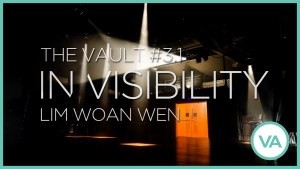 The Vault: #3.1 In/Visibility
The Vault: #3.1 In/Visibility
By Lim Woan Wen
22 & 23 May 2015
The Vault: #3.2 For The Time Being
By DarrenNg
22 – 25 Jul 2015
The Vault: #3.3 Scale 1:333333.333…
By Lim Wei Ling
30 Sep – 3 Oct 2015
Find out more about INDEX’s 2015 work as part of Centre 42’s The Vault programme here, and watch this space for more details about The Room that Grew Buoyant, Little by Little.

